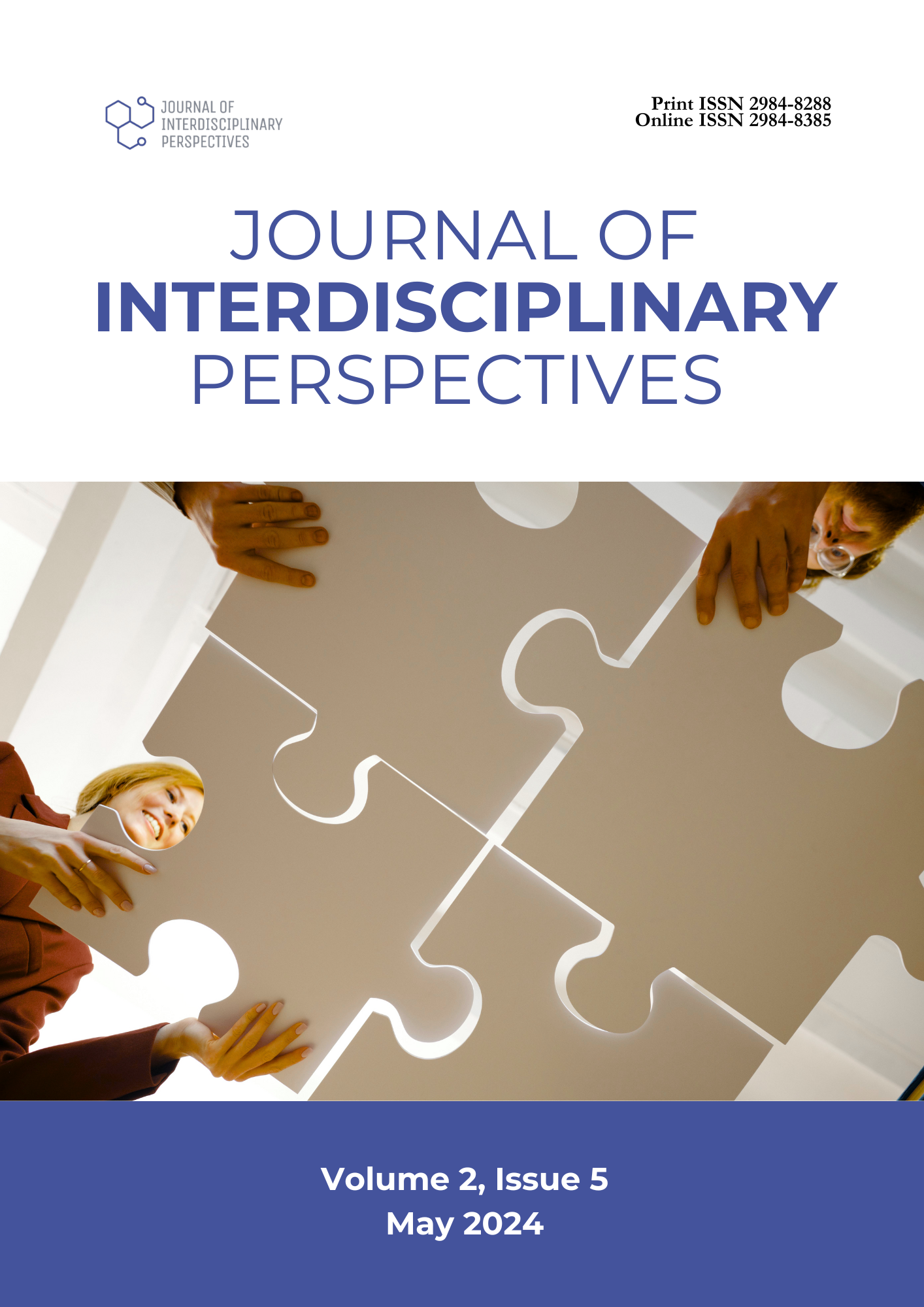Developing an Evaluation Scale for Assessing the Effective Implementation of Matatag Curriculum in Philippine Public Schools: Exploratory Sequential Design
DOI:
https://doi.org/10.69569/jip.2024.0074Keywords:
Matatag curriculum, Philippine public schools, Curriculum implementation, Evaluation scale, Holistic educationAbstract
The Matatag curriculum is a comprehensive educational framework designed to enhance learning and development in Philippine public schools, focusing on holistic, inclusive, and culturally relevant teaching practices incorporated into peace and values education and reading enhancement. Using a mixed-method exploratory sequential design, this study aimed to develop an evaluation scale for the effective implementation of the Matatag curriculum. The findings revealed twelve essential themes from the views of teachers, underscoring the need for integrating interactive learning, critical thinking, technology integration, cultural relevance, and collaborative strategies to boost student engagement and outcomes. Further, Exploratory Factor Analysis (EFA) and Confirmatory Factor Analysis (CFA) identified three core dimensions crucial for curriculum evaluation: Curriculum Design and Content, Teaching and Learning Enhancement, and Implementation and Support. These dimensions underscore the importance of a comprehensive, inclusive curriculum approach. While Structural Equation Modeling (SEM) indicated these dimensions were optimal for developing the Matatag curriculum’s evaluation scale. The refinement of the thirteen items as a final evaluation tool went through rigorous item analysis, resulting in a reliable instrument with a Cronbach's alpha of 0.896, ensuring precise curriculum implementation assessment. This process validated the research findings, both quantitative and qualitative. The study concludes that a thorough assessment of curriculum effectiveness necessitates a blend of strategies, including stakeholder feedback and regular evaluations, to foster ongoing improvement. It recommends that educators embrace a holistic approach featuring interactive learning, critical thinking, technology, cultural relevance, and collaborative methods to elevate educational outcomes.
Downloads
References
Adamson, B., & Yin, A. (2018). Leadership and Collaboration in Implementing Curriculum Change in Hong Kong Secondary Schools. Asia Pacific Education Review. Vol. 9, No.2, 180-189.
Alvarado, C. C. P. (2023). Communicative Competence in Spiral Progression Curriculum: A Study Reinforcing the Implementation of MATATAG Curriculum in the Philippines. International Journal of Humanities and Education Development (IJHED), 5(6), 11–29. https://doi.org/10.22161/jhed.5.6.3
Caballero, B. A. (2023, Oct. 11). Improve learning and empower the future: Impact of DepEd's MATATAG Program on Learners. https://www.depedbinan.com/improve-learning-and-empower-future-impact-depeds-matatag-program-learners/
Cabaltea, S. M., Dela Cruz, M., Deliva, R. M., Demesa, M. J., Marfil, J. M., Noga, A. R., Prado, S. (2023). MATATAG Curriculum as a Decongested Pillar of Philippine Education: Tweak or Weak? https://www.studocu.com/ph/document/ateneo-de-naga-university/
Cabañero, J. (2023). A Policy Study on The Implementation of Inclusive Education Program in The Philippines. DOI:10.13140/RG.2.2.11224.88325
Creswell, J. W. (2003). Research design: Qualitative, quantitative, and mixed methods approaches. Sage Publications.
Creswell, J. W., & Clark, V. L. P. (2007). Designing and conducting mixed methods research. Sage Publications.
Creswell, J. W., & Plano Clark, V. L. (2011). Designing and conducting mixed methods research. Sage Publications.
Dela Cruz, R. et al. (2024). The Matatag Curriculum in Urban Philippine Schools: A Case Study. Manila Journal of Educational Studies, 12, 134-165.
De La Fuente, J. K. (2022, August 9). Addressing gaps in DePEd-developed learning resources. TeacherPH. https://www.teacherph.com/addressing-gaps-deped-developed-learning-resources/
Douglas, (2017). The critical importance of professional development in effecting change in teaching practices. Journal of Education and Training, 4(2), 127-134.
Ertmer, P. A., & Ottenbreit-Leftwich, A. T. (2020). Teacher technology change: How knowledge, confidence, beliefs, and culture intersect. Journal of Research on Technology in Education, 42(3), 255-284.
Estrellado, P. (2023). MATATAG Curriculum: Why Curriculum [must] Change? Journal of Interdisciplinary Perspectives, 2(1), Page 6–10. https://doi.org/10.5281/zenodo.10336930
Escuadro, R. (2023, November 7). Transformational journey of learners through MATATAG curriculum. Philippine Information Agency. https://pia.gov.ph/features/2023/11/07/transformational-journey-of-learners-throughmatatag-curriculum
Freeman, S., Eddy, S. L., McDonough, M., Smith, M. K., Okoroafor, N., Jordt, H., & Wenderoth, M. P. (2014). Active learning increases student performance in science, engineering, and mathematics. Proceedings of the National Academy of Sciences, 111(23), 8410-8415.
Gamboa, A. G. (2023, February 3). PressReader.com — digital newspaper & magazine subscriptions. PressReader. https://www.pressreader.com/philippines/sunstar-pampanga/20230203/281616719515223
Gay, G. (2020). Culturally Responsive Teaching: Theory, Research, and Practice. Multicultural Education Series. New York, NY: Teachers College Press.
Hachero, A. (2023, Sept. 20) Teachers’ skills key to success of MATATAG curriculum: DepEd. Retrieved from https://malaya.com.ph/news_news/teachers-skills-key-to-success-of-matatag-curriculum-deped/
Hill, C. M. & MacDonald, M. M. (2016). Implementation and impact of experiential learning in a graduate level teacher education program: An example from a Canadian university. Global Education Review, 3 (4). 54-69
Lumadi, M. W. (2017). Implementing a Responsive Curriculum to Diverse Learners. College of Education, Department of Curriculum and Instructional Studies. J Soc Sci, 35(2): 111-123 (2013). DOI: 10.31901/24566756.2013/35.02.05
Mack, N., Woodsong, C., MacQueen, K. M., & Namey, E. (2011). Qualitative research methods: A data collector’s field guide. Family Health International.
Onwuegbuzie, A. J., Bustamante, R. M., & Nelson, J. A. (2010). Mixed research as a tool for developing quantitative instruments. Journal of Mixed Methods Research, 4(1), 56-78.
Pamintuan, R. (2023). MATATAG curriculum: Building strong foundations for lifelong learning. Sunstar Pampanga. https://www.pressreader.com/philippines/sunstar-pampanga/20231010/281586655248002
Piaget, J. (1960). The psychology of intelligence. Routledge & Kegan Paul.
Schubert, W. H. (1986). Curriculum: Perspective, paradigm, and possibility. Macmillan.
Singh, A., & Lee, M. (2021). Navigating curriculum implementation in a global context. International Journal of Educational Development, 82, 102-111. https://doi.org/10.1016/j.ijedudev.2021.102289
Spector, B. S., & Leard, C. S. (2020). Emergent model for community engagement: Developing courses and programs. Journal of Global Education and Research, 4(1), 80-95. https://www.doi.org/10.5038/ 2577-509X.4.1.1055
Teddlie, C., & Tashakkori, A. (2008). Foundations of mixed methods research: Integrating quantitative and qualitative approaches in the social and behavioral sciences. Sage Publications, Inc.
Zoller, U. (2023). Are lecture and learning compatible? Maybe for LOCS: Unlikely for HOCS. Journal of Chemical Education, 70(3), 195-197.
Downloads
Published
How to Cite
Issue
Section
License
Copyright (c) 2025 Journal of Interdisciplinary Perspectives

This work is licensed under a Creative Commons Attribution-NonCommercial 4.0 International License.









